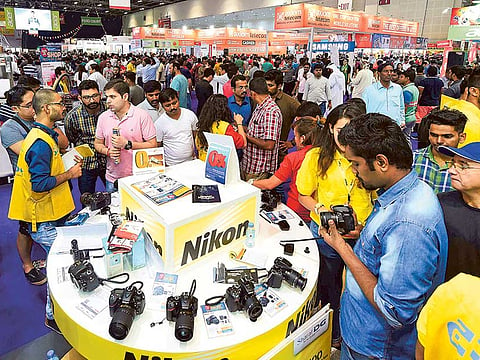Smartphones and cameras ‘will coexist in the market’
Future of cameras will be the ability to connect with smartphones via Bluetooth, Nikon says

Dubai: Nikon says that smartphones and cameras will coexist in the market but the future of cameras will be the ability to connect with smartphones via Bluetooth and for social media.
“The market for DSLRs is different for each region. In the UAE, the market is very stable. The demand for mirrorless is very small in this region as people prefer bigger is better. In other Asian countries, the mirrorless market is very strong due to its compact size,” Naoki Onozato, who took over as managing director of Nikon Middle East in July, told Gulf News.
Nikon produces mirrorless cameras but not selling in this region.
DSLR cameras use mirrors to reflect the image passing through the lens, which can be seen through the viewfinder. By eliminating the mirrors, the cameras become light and compact.
In the UAE, he said that Nikon’s market share for DSLR cameras is around 40 per cent while Cannon has around 50 per cent.
“It is very difficult to become number one due to the competition and preference. This year, our goal is to maintain the market share despite supply issues due to the Kumamoto, Japan, earthquakes in April,” he said.
Photography
Various parts suppliers, including Sony sensors, were affected by the quakes and Nikon said that their production and sales of some models were “inevitably” impacted.
“Now we are slowly recovering and by December, we are expected to be back to normal,” he said.
Onozato said that the company’s mission is to make photography simple and fun for photographers.
When smartphones have killed the compact cameras or point-and-shoot cameras, Onozato still sees demand for these devices in certain pockets as people would like to have a dedicated camera.
“I was in Latin America before and there is a big demand for point-and-shoot cameras despite the growing trend for smartphone cameras. Gradually, we will decrease the production but will the production will continue as long as demand is there,” he said.
Canon still manufacturers point-and-shoot cameras — Nikon Coolpix — when rest of the key camera manufacturers has exited the segment.
Real growth
Right now, high-end models contribute around 12 per cent to Nikon’s revenue and the company wants to increase it further this year.
“The real growth of around 80 per cent is coming from entry-level DSLRs while around 30 per cent is coming from sales of lenses,” he said.
The UAE, Saudi Arabia and South Africa are the major markets for Nikon.
“Our expansion plans is to expand further into African markets,” he said.
Sign up for the Daily Briefing
Get the latest news and updates straight to your inbox



